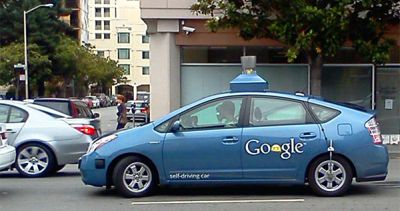When Karl Benz invented the first gasoline-powered automobile, it had no gears, no brakes, and could not climb up or down slopes unaided. Obviously a lot has changed since Benz’s primitive contraption, but one thing remained the same “the driver”.
That too is about to change. It is the next leap forward of the automobile industry, one that will take the concept of mobility and freedom by automobiles to a whole new level. Only this time it is not from automobile manufacturers, but from a rather unexpected, yet highly capable, corporation—Google.
.jpg)
The Internet search giant-turned-future tech pioneer decided to drive the race of the fully automated car industry. They developed a fleet of “Driverless Cars”—capable of automated driving and navigating entirely without direct human input—and tested them across public roads and highways of the USA.
Not only were the tests conducted successfully, but the cars under computer control proved to be surprisingly safe, without a single accident reported in more than 480,000 km of testing.
The safety issue allowed Google to successfully convince legislatures in three States to pass laws permitting the use of their self-driving cars on public roads and highways, Nevada being the first State to pass the law, followed by Florida, and most recently California.

Alex Padilla, the California Senator who sponsored the Bill, observed: "The vast majority of vehicle accidents are due to human error. Through the use of computers, sensors and other systems, an autonomous vehicle is capable of analyzing the driving environment more quickly and operating the vehicle more safely."
To allow such efficiency, the cars are equipped with a wide array of technologies, including radar sensors and laser range finders that monitor the surrounding road and traffic conditions 20 times a second, video cameras aimed at the surrounding area, and various other sensors and artificial-intelligence software allowing for autonomous steering.
In addition to that, Google employed a fleet of manually-driven vehicles that drive around the country collecting maps, to be used later by their autonomous vehicles for navigation. This is made possible by Google’s data centers, which can process the enormous amounts of information gathered by the cars when mapping their terrain.
Proponents of the driverless car maintain that they would address a variety of current transportation issues, first and foremost of which is the reduction of traffic accidents. Google claims its car could save almost 30,000 lives each year on USA highways, and prevent nearly 2 million additional injuries.
Furthermore, the greater precision of an automatic system could improve traffic flow and dramatically increase highway capacity, by relying on robotic precision instead of human precision to remain on the lane, cars can be allowed to drive closer on narrower lanes, thereby reducing or eliminating traffic jams.
Also, the self-driving cars would allow commuters to do other things while traveling, or even send the car to run their errands or pick up their kids. The need for owning a car could be dramatically reduced, as well as the need for parking.
One of the most important issues the self-driving cars would address is allowing disabled drivers, such as the blind, to drive around and have the mobility they desire.
Watch the video below of Steve Mahan, a 95% blind man, as he takes a Google self-driving car out for a spin, doing what he calls “some of the best driving of his life”.
Video of Steve Mahan
References
www.wikipedia.com
googleblog.blogspot.com
www.telegraph.co.uk
design-engine.com